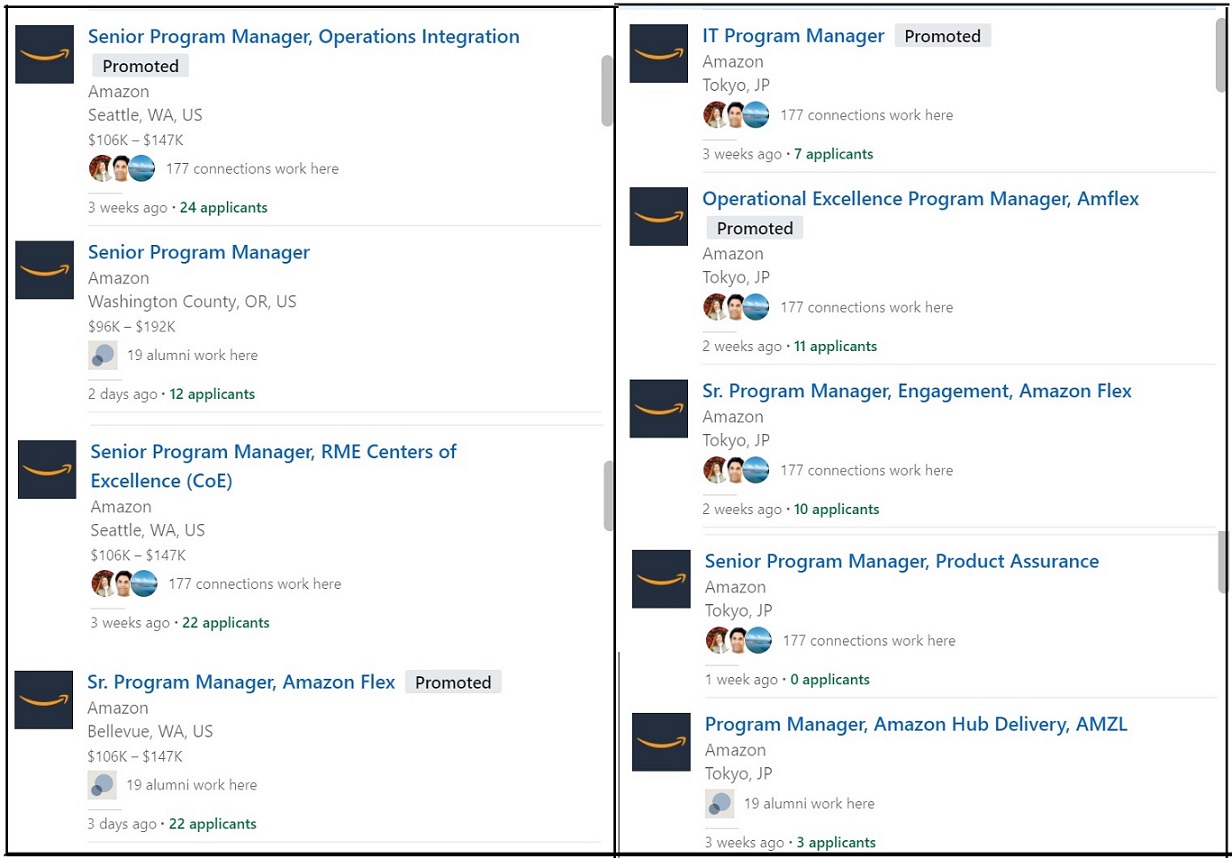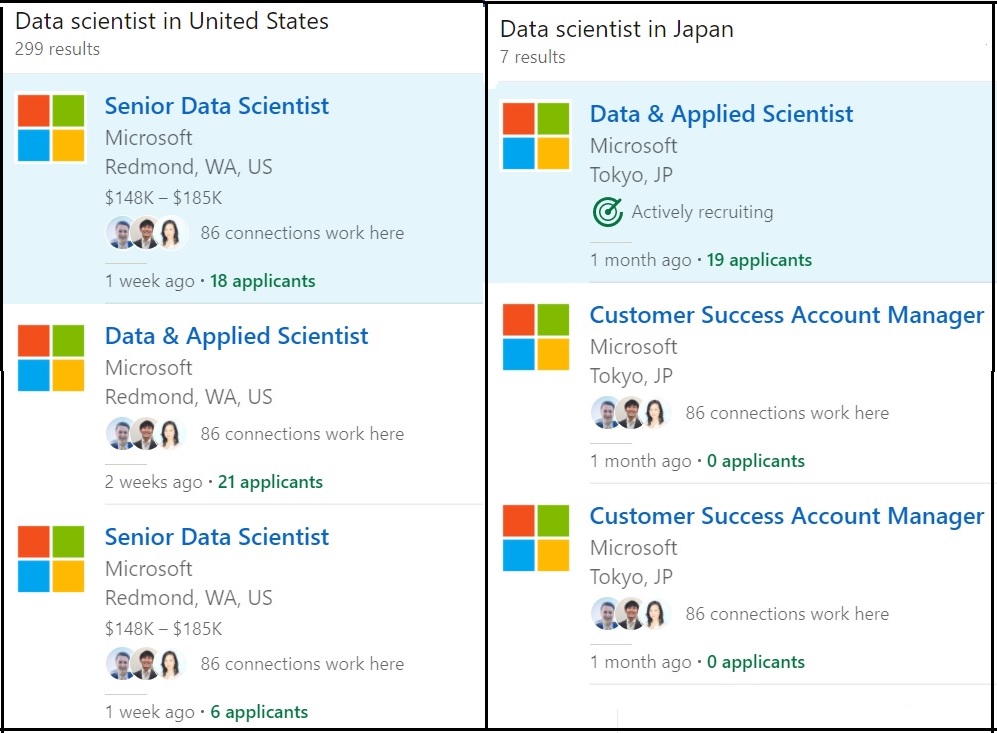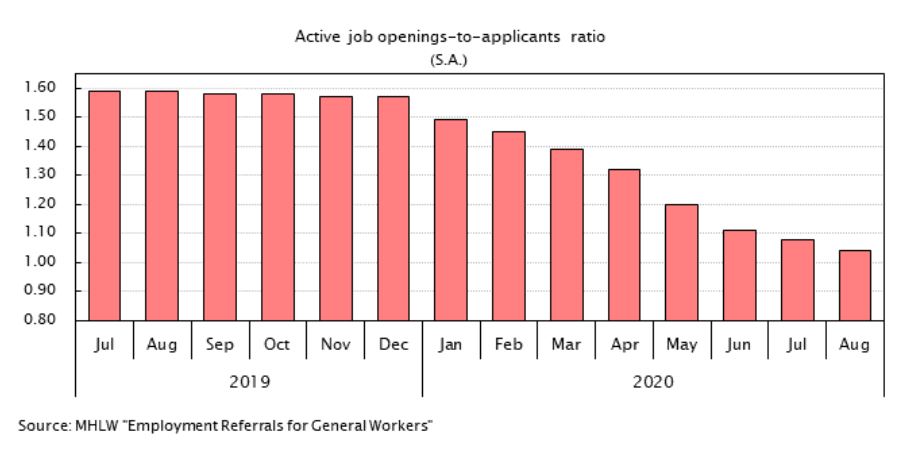Writing Job Descriptions to Get the Best and not to Ask for the Best

We all know the importance of having a job description for hiring employees, but what’s more important is being practical in having the right kind of JD. The objective of writing a job description should not be to “ask for the best but to “get the best candidates, practically.
As a recruitment company, we receive Job requirements in manners which are sometimes extremes.
- One-liner requirements include a strong AWS candidate or a strong project manager on the application development side but some exposure to infrastructure.
- Two or three-page-long JDs can be confusing and repelling. An employer does not like to read a very lengthy resume, and the same may be true of the candidates.
Either of the above can seriously impact your hiring efficiency in Japan.
Generic importance of a good Job Description
Before going Japan-specific, let’s talk about the generic importance of a Job Description:
- To convey to the candidates about the requirements and to attract the right ones
- While using recruitment agencies, giving them the tools to do the right Boolean searches in their vast databases of candidates.
- To have a ready reference for the hiring managers to enable them to shortlist the right ones
What’s Different in the Japanese Job Market
In Japan, the demand-supply gap between jobs and qualified candidates is quite a big one. If we narrow down the criteria to include bilingual candidates (who can speak English and Japanese), your talent pool shrinks even further. Check some important statistics about the challenges of hiring in Japan. This article will try to see what role a job description can play in easing hiring pains.
First of all, let’s look at some examples of hiring situations in Japan. For the first comparison, we picked up Amazon and tried to see their job ads on LinkedIn for the IT Project Manager search term. Here are the results:

The above example may not be a perfect apple-to-apple comparison, but it should be enough to give some idea.
The similar jobs of Amazon in the US and Japan are as follows:
| USA | Japan |
|---|---|
| 24 Applicants in 3 weeks | 7 Applicants in 3 weeks |
| 12 Applicants in 2 days | 11 Applicants in 2 weeks |
| 22 Applicants in 3 weeks | 10 Applicants in 2 weeks |
| 22 Applicants in 3 days | 0 Applicants in 1 week |
| — | 3 Applicants in 3 weeks |
Let’s quickly check one more live example. Here, we searched for Data scientist jobs in the USA and then in Japan. Here’s what we got:

The similar jobs of Microsoft in the US and Japan are as follows:
| USA | Japan |
|---|---|
| 18 Applicants in 1 week | 19 Applicants in 1 month |
| 21 Applicants in 2 weeks | 0 Applicants in 1 month |
| 6 Applicants in 1 week | 0 Applicants in 1 month |
Does the above example catch the attention of what we are trying to point to?
Here’s a look at the jobs-to-applicant ratio in Japan:

Tips for Creating Job Descriptions in Japan
Yes, attracting applicants is much more challenging in Japan than in most other countries. How you create the job description also plays a major role.
This is not something to be taken lightly. The scarcity of workers can and will adversely affect companies in the long term. According to a report by Nikkei Asia, a study by Teikoku Databank found that 114 companies in Japan went bankrupt due to a shortage of labor in 2017, with a year-on-year increase for the fourth consecutive year. The same report predicts that Japan will face a shortage of 6.44 million workers in 2030.
In Japan, with one of the least numbers of applicants per open position, the most important point is to attract more candidates to apply then repel them by making them nervous with too many expectations. Most of the time, a candidate with the right attitude and aptitude may perform better than a candidate lacking in the attitude but having all the right skills.
Some important points to keep in mind while creating a job description, especially in Japan, are as follows:
- The demand-supply gap in Japan is high – especially for bilingual candidates.
- The average number of applicants per open position is one of the lowest in Japan, and it’s better to attract more applicants to have more choices. Asking for 70% of what you want and attracting and getting 170% of applications may be better than asking for 170% of what you need and getting 70% of applicants.
- It may not pay to be very rigid about the number of years of experience and age. Often, with the right attitude and aptitude, a less experienced person may be better. The opposite of this can also be true: often, a senior candidate may beat a younger one in terms of energy levels and inclination to learn and perform.
- Many times, being practical about what we can have and doing better with that than what we want may prove to be more effective.
- Branding matters—not just the branding of the company but also of the role. It’s vital to indicate how the role will add value to the candidate’s career, not just in the present but also in the future.
It all starts with the right Job Description (JD)
Hiring and retaining good people, therefore, should be paramount on your company’s radar right now. And it starts with the job description.
With a little extra effort, you can write the right job description that will attract a wider range of highly talented candidates to apply. Another factor to consider is that a clear and attractive job description will ensure you’re not turning away the right people even before they apply!
Being very thoughtful while writing a job description is especially important when hiring in Japan.
It is also better to be flexible about your requirements—don’t be pedantic about the number of years of experience or the applicant’s perceived age. Instead, focus on a candidate’s attitude and aptitude. Sometimes, a senior candidate may be the better choice than a younger one in terms of energy and commitment to learning and job performance, and vice versa.
Your job description can convey that you are aware of this, and it can effectively increase the chances of attracting more qualified people into your pipeline.
Finding the best candidate for the job starts with how you describe the position in your recruitment ad — the job description. It is essential to have a clear and engaging description of the position you are hiring for.
So, what does a great job description include?
1. A bit of marketing
Many good candidates are just as interested in the company they are applying to as the job itself. In Japan, company branding is especially important when hiring employees. It would help if you emphasized how the role will add value to the candidate’s career.
2. Necessary skills descriptions
Obviously, these are important, and so this is one area you need to be precise about.
We have even seen one-liner skills descriptions from potential employers: “We need a strong AWS candidate”! True story. Recruitment agencies have vast databases of candidates, and providing the right information allows recruiters to perform the right searches for you.
Of course, job descriptions don’t need to be overly long, either. The Goldilocks principle should apply here. Include enough information to attract a potential candidate to send in their application, but not too long to stop reading it.
It is always better to avoid mentioning skills that are not really required. It is also better to avoid adjectives like “very strong,” “in-depth,” etc., especially when targeting Japanese candidates. Sometimes, too many such adjectives may scare a potential and good candidate. This is a typical mistake many foreign companies make, failing to understand the risk averseness inherent to Japanese culture and society.
3. Describe what your company stands for
In addition to the basics, such as the role description and required skills and experience, you should include a boilerplate of your company’s culture, mission, and values.
A progressive, inclusive company will usually attract the best and brightest employees. Every potential candidate has different career anchors – money is often a prime factor for a job change, but if you don’t have much leeway in your budget, try to attract a good candidate with other perks.
4. Then, be flexible
Above and beyond the necessary technical or professional skills required for the job, you should convey that you are flexible in your hiring practices. You can include a boilerplate of your company’s culture, mission, and values.
You can also welcome people returning to work after gaps in their careers, such as parents who have taken breaks to stay home with young children. Say something like, “We welcome applications from enthusiastic and talented people returning to work, and we will support your return to the workplace.” Similarly, if your company is flexible about working hours and arrangements, mention this in your job description.
In markets like Japan, where the demand for labor outstrips the supply and is projected to become more acute in the coming years, being practical, savvy, and thoughtful in writing the job descriptions may prove extremely effective and help your company find great employees.

Coming from an IT background of SAP consulting, IT Business development, and then running the country operations of an IT consulting multinational, Himanshu is co-founder and Managing Director of ReachExt K.K., and EmploymentJapan.com. He is also an Advisory Board Member of a Silicon Valley AI/IoT startup.